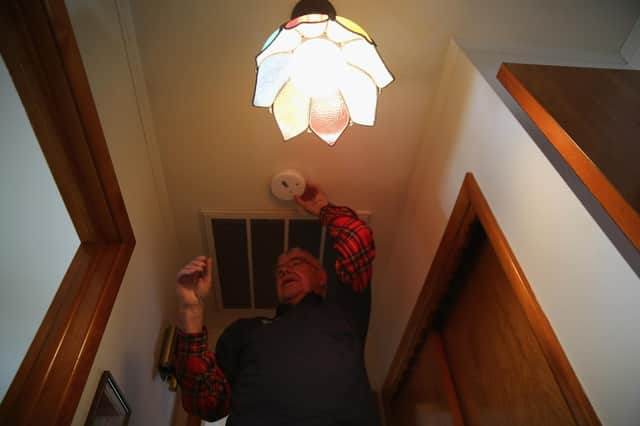Scotland's new smoke and heat alarm law will effectively force poor homeowners to break the law – Susan Dalgety


Not surprisingly, you may have missed this latest Holyrood diktat, what with the new Covid rules, Christmas and the general mayhem and confusion that passes for daily life in the dying days of 2021.
But in six weeks’ time, by law, every home in Scotland must have interlinked smoke alarms. Landlords will be responsible for fitting them for their tenants, but if you own your own home, it is up to you to find the money.
Advertisement
Hide AdAdvertisement
Hide AdIf, like me, you live in a single-storey flat or bungalow, you will need one in your sitting room, one in the hall and a heat alarm in your kitchen. If your home has an upstairs, then you will need three smoke alarms and one heat alarm, and you will also need a carbon monoxide detector if you have a boiler.
None of these devices come cheap. If you have an afternoon to spend comparing prices online, the Scottish government reckon you can find a full set of “tamper proof, long-life lithium battery alarms” for an average cost of £220.
You can stick them to your ceiling with adhesive tape and pray they don’t fall off. But if you want the security of alarms that are wired into your home’s mains supply, you will have to pay for an electrician to fit them. And they don’t come cheap either.
This winter, many folk will struggle to pay their energy bills, which promise to be eye-wateringly huge. Another demand on their already stretched household, especially in the post-Christmas financial desert that is January, may just tip them over the edge.
Advertisement
Hide AdAdvertisement
Hide AdBut wait, help is at hand. Or is it? The Scottish government has set aside £500,0 00 for housing charity Care & Repair Scotland to help those homeowners unable to afford the new alarms. Problem is, that with half the money already spent, only 800 people have benefited.
According to Scottish Labour, which has just carried out an investigation into the issue, fewer than one in ten of those eligible for support (around 2,000 households across Scotland) will get help.
A quick look at their Freedom of Information data shows that East Lothian Housing Association has received £14,000 to pay for a possible 60 installations, but no-one has got a set of alarms fitted yet. The figures for Edinburgh are unavailable, but as Glasgow only got £50,000, it doesn’t look like the capital is set for a bonanza.
Many people are simply not going to be able to afford the new alarms. I doubt if the Scottish government is going to send round a team of enforcers to check our ceilings. But your home insurance may be invalid without the new system in place, and you will have to fit them if you want to sell your home.
Advertisement
Hide AdAdvertisement
Hide AdOn balance, the alarms are a good idea. But the Scottish government should have made sure there was money available to help those folk most in need. Otherwise, people will have no choice but to break the law.
A message from the Editor:
Thank you for reading this article. We're more reliant on your support than ever as the shift in consumer habits brought about by coronavirus impacts our advertisers.
If you haven't already, please consider supporting our trusted, fact-checked journalism by taking out a digital subscription.
Comment Guidelines
National World encourages reader discussion on our stories. User feedback, insights and back-and-forth exchanges add a rich layer of context to reporting. Please review our Community Guidelines before commenting.
